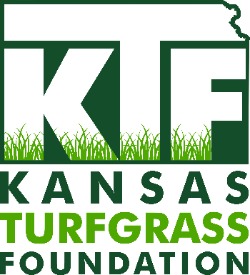Stinkgrass (Eragrostis cilianensis)

Stinkgrass sometimes referred to as stinking lovegrass or candy grass is a summer annual grassy weed that was introduced from Europe. This weed is most noticeable when the grayish-green triangular shaped panicle type seedhead is present. The seedhead closely resembles that of the bluegrass family and may cause confusion in identification. Individual spikelets, however, possess a grayish-silver, sometimes purple color and at times may appear waxy. The leaves are smooth, glossy below and rough on top typically ranging from ¼ to ½ inch wide. The stem of the plant is jointed with slightly swollen nodes, occasionally with a 45 degree bend near the stem base.To vegetatively identify stinkgrass, look at the ligule, the sheath and back of the leaf blade where it attaches to the collar. The ligule is a short fringe of hairs, with several long hairs at the outer edge. Another distinctive characteristic of stinkgrass is that it produces a bitter pungent odor, most noticeable when the tissue is crushed or mowed, hence the name stinkgrass. It is said to be poisonous to livestock, particularly horses, but most animals avoid grazing it because of the odor. Stinkgrass normally spreads by seed dispersal which emerges in late spring a few weeks after crabgrass or at a similar time to goosegrass. Maximum germination occurs when soil temperatures remain above 65°F for several weeks. Mature this plant will grow from 1 to 2 feet tall and it can temporarily survive mowing heights typical for home-lawns.
Occurrence
In general, stinkgrass is not a persistent problem in lawns but commonly occurs in newly established or poorly maintained lawns and low maintenance areas like roadsides that were once cultivated as agricultural land. It can also be a problem in newly planted sod fields. Stinkgrass is most noticeable from late-July to September and most often found growing in full sun, semi-compacted soils along roadways. It has a shallow fibrous root system and is normally not a problem in properly maintained turf the second year after planting.
Non-Chemical Control
Stinkgrass can be very easily removed by hand. In newly established lawns, however, practices to promote maximum density of the desirable turf species like adequate fertility, proper mowing and irrigation will eventually crowd out this weed. Stinkgrass will die after the first killing autumn frost allowing a vigorous desirable turf species to fill the voids.
Chemical Control
No specific pre-emergence herbicides are labeled for turf use, though most common pre-emergent herbicides suitable for crabgrass and goosegrass should also be effective on stinkgrass without injury to the desired turf species. The only compounds labeled for post-emergent control are glufosinate (Finale) or glyphosate (Round-up). Both of these herbicides are non-selective herbicides which kill all green plants and should not be applied to desirable turfgrasses. Once the stinkgrass has been controlled, however, these areas can then be reseeded or sodded.



